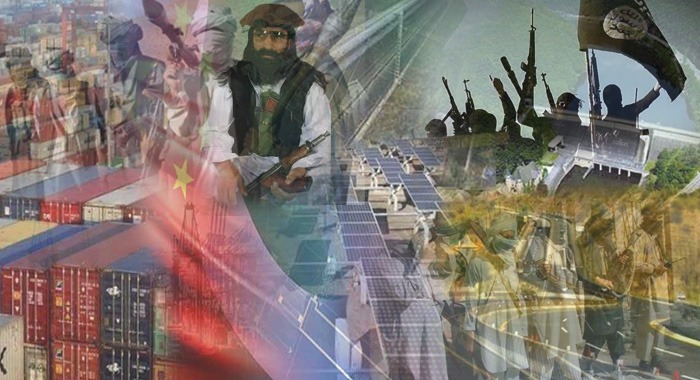Following the Taliban’s return to power in Afghanistan, increasing collaboration among local, regional, and international terrorist groups operating from Afghan soil has emerged as a significant threat to Afghanistan’s internal security, regional stability, and global peace. These developments have effectively rendered the Doha peace agreement obsolete. Repeated warnings have been issued to both the interim Afghan government and the international community about the mounting dangers posed by this nexus of terrorist organisations.
Alarming concerns stem from the reported presence of Al-Qaeda, Fitna al-Khawarij (formerly known as the banned Tehreek-e-Taliban Pakistan), Indian-backed terrorist organisations operating in Balochistan such as the Balochistan Liberation Army (BLA), and the Turkistan Islamic Party (TIP), which seeks independence for China’s Xinjiang region. These groups reportedly exploit Afghan territory as a safe haven for their operations.
One of the most pressing concerns is the potential acquisition of advanced weaponry and technology by these terrorist outfits. In Khyber Pakhtunkhwa, Fitna al-Khawarij has reportedly launched attacks targeting Chinese nationals, while in Balochistan, the BLA has also claimed responsibility for similar attacks. The BLA has publicly stated its opposition to Chinese infrastructure and investment projects in Balochistan. In contrast, groups operating in Khyber Pakhtunkhwa have not issued public statements explaining their motives for targeting Chinese citizens.
Despite ideological differences between the Turkistan Islamic Party and the BLA-TIP pursuing a global jihadist agenda and BLA pushing for ethno-nationalist independence, their operational goals have converged in certain areas. Taliban insiders confirm some level of tactical coordination between Fitna al-Khawarij and the BLA in Balochistan, united by their common enmity toward the Pakistani state. Although both TIP and BLA see China as a threat, there is no verified evidence of direct cooperation between them.
Reports suggest that while the BLA currently lacks large, weaponized drones, it does possess smaller UAVs mainly used for surveillance and propaganda purposes. According to Taliban sources, the BLA’s Commander-in-Chief, Bashir Zeb Baloch, has repeatedly condemned Chinese development projects in Balochistan. In his latest remarks, he accused China of dividing the region through the construction of fences around Gwadar, claiming it as an act of colonisation. He reaffirmed the BLA’s commitment to targeting Chinese interests and vowed resistance against what he described as foreign exploitation.
In response to recent BLA-perpetrated attacks on Chinese nationals in Karachi, China has pledged enhanced cooperation with Pakistani security agencies to protect its investments, including those under the China-Pakistan Economic Corridor (CPEC) and interests linked to the Chabahar Port.
Despite the absence of weaponized drone use by the BLA so far, there is credible intelligence that other terrorist groups operating in Pakistan—some aligned with Fitna al-Khawarij and BLA (as declared by the state)—now possess armed UAVs. Reports from journalists tracking BLA operations indicate that while the group has limited access to heavy weaponry, including anti-aircraft guns such as Dushkas, it remains constrained in its ability to conduct technologically advanced attacks. Their combat units are largely made up of lightly trained foot soldiers, though the Majid Brigade, their suicide wing, has executed high-profile attacks, including by female operatives.
Since 2018, BLA has shifted part of its focus toward ideological recruitment through targeted literature campaigns, notably attracting women who have since been deployed in suicide operations. Their primary targets remain Chinese nationals, due to China’s investment footprint in Balochistan, and settlers from Punjab, who are perceived by the group as agents of state occupation.
According to officials from the Counter Terrorism Department, armed drone technology has reached BLA through a convoluted network beginning with Iran’s acquisition and manufacturing of UAVs. From 2005 to 2013, Taliban factions looted NATO containers en route to Afghanistan, some carrying drone components. These were allegedly sold to Iran, which later passed on the technology to Al-Qaeda. It ultimately reached BLA through intermediaries within the Taliban network. However, due to their susceptibility to radar tracking and neutralisation, experts believe BLA has been hesitant to deploy them in active combat.
Sources also confirm BLA representatives have engaged in meetings with other extremist groups in Afghan provinces such as Kandahar and Kunar. These meetings reportedly involved discussions on operational tactics and the use of quad-copters for limited bombing and reconnaissance missions. However, BLA still lacks the infrastructure necessary for conducting sustained drone warfare, such as control centres or airstrips.
There are also indications that the TIP is covertly supporting BLA operations in Balochistan due to shared hostility toward Chinese interests. Additionally, TIP is suspected of aiding attacks on Chinese nationals in Khyber Pakhtunkhwa, allegedly providing financial and logistical support to Taliban elements, and possibly playing a role in the Bisham attack, which also involved Fitna al-Khawarij.
To mitigate tensions with Beijing, Afghan Defense Minister Mullah Mohammad Yaqoob recently brought Taliban Army Chief Qari Fasihuddin Fitrat to Qatar for high-level dialogue. Intelligence reports suggest that hundreds of TIP-affiliated families have been quietly relocated from Badakhshan to reduce friction with China. While TIP fighters are no longer operating with the same freedom of movement they previously enjoyed, the Taliban continues to offer them protection. Taliban leadership reportedly fears that an aggressive crackdown on TIP could drive them into the arms of ISIS, further complicating the already volatile security environment.





